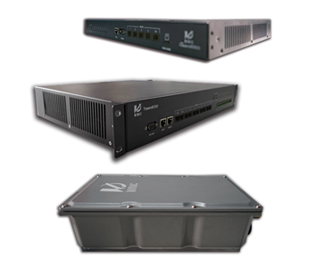-
About us
-
News
-
Product
-
Solution
-
Contact us

Product Model
Under development
Product Manual
The 5G Low Latency Cell Base Station is based on the O-RAN architecture and is used for indoor 5G technology with low latency, massive connection service deployment, visual operation and maintenance, intelligent management, convenient maintenance, can follow standards, and support 5G services at all stages including capacity, user experience and other requirements, can evolve smoothly, and protect operators' investment to the greatest extent.
The overall architecture of the indoor system is divided into three levels: SBBU, DEU and RAU. SBBU bears the baseband processing, signaling processing, status monitoring, etc. Basic capabilities of the radio access network; DEU realizes the broadcast distribution of sequential downlink services and alignment processing of sequential uplink services, responsible for the system link delay calculation, and implements delay adjustment on this basis to avoid delay dispersion. At the same time, it is responsible for the sequential downlink service frames and distributing them to each service interface. In the sequential uplink direction, it is responsible for receiving and aligning the service frames of each service interface, and then transmitting the service frames to the host; RAU realizes radio frequency signal and active antenna beam forming, multi-point coordinated transmission, the delay is less than 0.1 millisecond.
Product Features
Based on the SRRH architecture, the wireless service interface between the network topologies and the high-speed flow big data are transmitted and received by ultra-high-speed lasers, and the optical fiber carries the transmission of radio frequency signals and broadband resource allocation. It supports TDD format and complies with 5G 3GPP standard (Rel-16). It supports frequency and bandwidth: 2500-2690MHz (bandwidth 100M); 3300-3400MHz (bandwidth 100M); 3400-3500MHz (bandwidth 100M); RF active antenna (RAU) supports 4T4R MIMO, total output power is 500mW, 125mW per channel; Distribution Expansion Unit (DEU): use POE power supply or composite optical cable to power the radio frequency active antenna, one expansion unit will support 8 radio frequency active antenna (RAU) access; the baseband access processing control host (SBBU): supports 12 distribution type expansion unit DEU access, and the most are with 4-level cascade expansion; support 4*4 MIMO beamforming antenna: In Massive MIMO state, RX and TX transceiver IQ signals can support up to 16 independent channels, and the maximum throughput is 12.8Gbps. The downlink delay is less than 0.1ms.